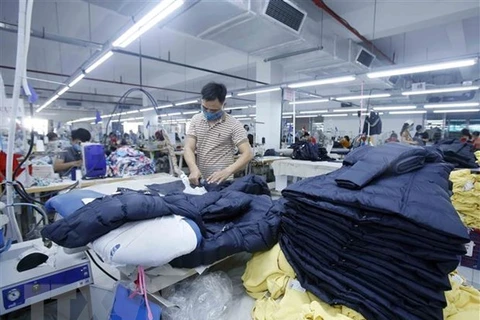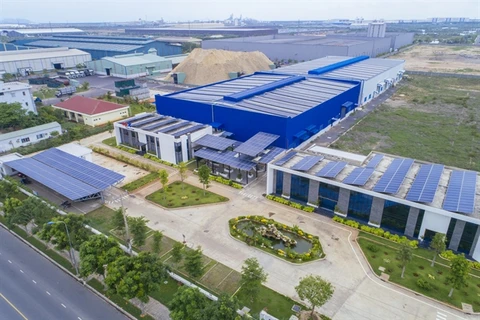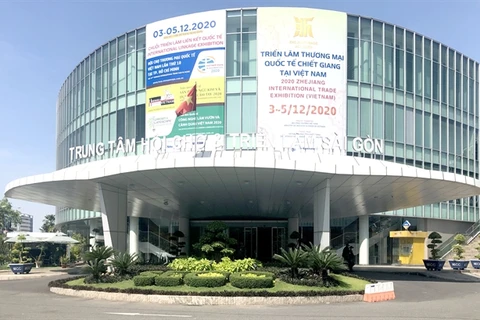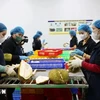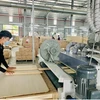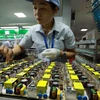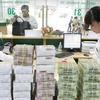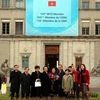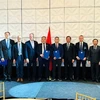 The processing and manufacturing industry plays a key role in the national economy. (Photo: VietnamPlus)
The processing and manufacturing industry plays a key role in the national economy. (Photo: VietnamPlus) Hanoi (VNA) – The added value of the industrial sector increased by 3.36 percent last year, higher than the average growth pace of the national economy, statistics show.
Last year, despite the severe impacts of the COVID-19 pandemic, the processing and manufacturing industry still posted remarkable outcomes and continued to serve as a driver of the national economy, heard a meeting held by the Ministry of Industry and Trade in Hanoi on January 7.
Positive shift
According to the ministry, the added value of the industrial sector increased by 3.36 percent last year, higher than the average growth pace of the national economy. The processing and manufacturing industry took the lead with an expansion of 5.82 percent.
During the 2016-2020 period, the added value of the industrial sector was up 7.16 percent, much higher than the set target of 6.5-7 percent per year.
The processing and manufacturing industry maintained its role as the growth momentum for the entire industrial sector. Meanwhile, mining activities have been reduced and labour -intensive industries have been shifted towards high-tech ones.
Major industries like electronics, garment-textile and footwear have posted high growth rates, significantly contributing to the enhancement of Vietnam’s industrial development, creating jobs and improving the country’s industrial competitiveness.
Ratio of high-tech products on the rise
The process of international economic integration has spurred the development of supporting industries, promoted connectivity and consolidated the supply chains for Vietnam’s major industries like garment-textile, footwear, electronics and agricultural processing.
Notably, Vietnam’s auto industry has affirmed its capacity and position in the global value chains.
Le Ngoc Duc, General Director of Thanh Cong Motor Vietnam, said the industry has contributed billions of US dollars to the State coffer.
Minister of Agriculture and Rural Development Nguyen Xuan Cuong said after 35 years of Doi Mo (renewal), Vietnam’s industrial sector has made many breakthroughs, meeting consumption demand of its nearly 100 million people.
“Made in Vietnam” products have also been introduced at domestic and foreign markets, he said, attributing this to efforts in restructuring the national economy and developing economic spearheads.
Despite the COVID-19 pandemic, Vietnam still enjoyed a year-on-year increase of 6.5 percent in overseas shipments in 2020, posting among the highest export growth in the world. It also saw a fifth consecutive year of trade surplus, which hit a record 19.1 billion USD, Minister of Industry and Trade Tran Tuan Anh reported.
The country recorded stable growth in both exports and imports, with total trade turnover topping 500 billion USD for the second year in a row.
Anh said that international integration has been not only maintained but also promoted thanks to Vietnam’s initiatives supported by countries in the region and the world. The negotiation, signing, and implementation of free trade agreements (FTAs) have obtained significant outcomes.
International economic integration has turned Vietnam into one of the world’s most open economies. It now has trade relations with more than 230 economies, 60 of which it has FTAs with, according to the minister.
However, he acknowledged, despite the surge in exports, imports remain substantial and market and production diversity is still modest, while goods’ competitiveness still relies on price rather than value.
The minister also pointed to latent pollution risks in some industries and a lack of many large-scale national brands as obstacles.
In his remarks, Prime Minister Nguyen Xuan Phuc said there still remain limitations in the domestic industrial sector, which, he said, has yet to satisfy requirements of industrialisation and modernisation.
Connectivity and cooperation between businesses has remained limited, the leader added.
He asked the industry and trade sector to view enterprises as the centre of reform and development so as to further facilitate production and business activities and enhance competitiveness.
The sector was also requested to ensure a long-term and consistent policy framework while creating optimal and synchronous conditions to improve productivity, quality, efficiency, and competitiveness.
In industrial development, it must reduce any dependence on unsustainable advantages from natural resources and switch from natural resource-based industries to innovation-based industries, he noted./.


